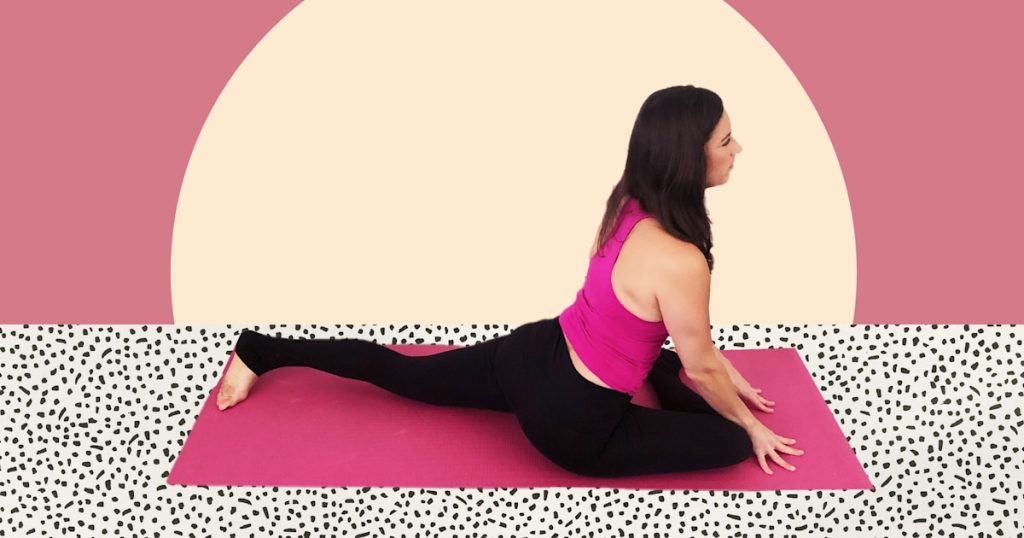Sitting all day at a desk can lead to hip pain due to poor posture and muscle imbalance caused by lack of activity. Stretching, particularly the pigeon pose, can help ease this pain by targeting neglected muscles like the deep glute muscles and hip flexors. Pigeon pose can decrease the risk of injury and relieve discomfort in the hip flexors and low back. However, it is essential to keep the back leg straight and the hips square while practicing the pose to get a deeper stretch and prevent leaning to one side. Beginners can modify the pose by using a cushion under the bent leg or creating a “Z” shape with their legs to decrease the intensity while working on flexibility.
To perform pigeon pose correctly, start in a downward facing dog and bring your right leg forward toward your right hand, resting it parallel to the front of the mat. Lower your hips onto your right leg, straightening your left leg out behind you while keeping your hips square and balancing your weight by pressing your hands onto the mat. Breathe slowly and hold the position for 60 seconds, then switch to the other side and repeat the process. The pigeon pose stretches many different areas of the body, making it challenging. If your body feels too tight for this move, other exercises like seated toe touch, butterfly stretch, kneeling hip flexor stretch, and clamshells can help prepare your body for the pigeon pose by opening hips, hamstrings, and outer thighs.
Stretching can also relieve mental stress and physical tension by increasing flexibility. Pigeon pose is a beneficial addition to your fitness routine as it targets muscles often neglected and helps decrease the risk of injury. Mistakes to avoid when practicing pigeon pose include keeping the back leg straight to achieve a deeper stretch and keeping the hips square without leaning to one side. Beginners can modify the pose by using props or altering their leg position to decrease the intensity while still working on their flexibility. Practicing pigeon pose correctly can lead to improved hip flexibility and reduced discomfort in the hip flexors and low back.
In addition to stretching, incorporating movement into your day can help alleviate hip pain caused by prolonged sitting. Lack of activity can lead to muscle imbalance and tendonitis near the hips, further exacerbating discomfort. Pigeon pose benefits by targeting specific muscle groups that can be tight due to sitting for extended periods. By practicing this pose and other hip-opening exercises like seated toe touch, butterfly stretch, and clamshells, individuals can improve hip flexibility and reduce tension in the hips and surrounding muscles. Regular stretching and movement can contribute to overall physical and mental well-being, making it essential to incorporate these practices into daily routines.


